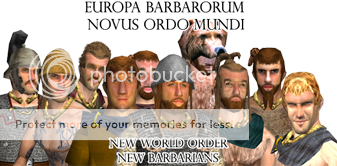
Originally Posted by
Finn MacCumhail

About Vavilov, my bad, it was Petr Zhukovsky, don’t know why I confused them.
Zhukovsky wrote a monograph “Cultivated plants and their relatives” 2nd edition 1964 about this issue. He says that Cassela was right.
This information about Zhukovsky taken from book Guliaev V. I. “Pre-Columbian voyage to America: Myths and Reality” chapter 4.
Let me quote directly from
Jashemsky,W.F; Meyer F.G. (ed.): The Natural History of Pompeii, University of Cambridge Press 2002 [
review] the most recent comprehensive - and
conveniently partially digitized - publication on the subject:
"A [...] study of the fruits pictured in the wall paintings by Professor Domenico Casella, of the Istituto di Coltivazioni Arboree of the University of Naples, was the next work on plant material of the area.
He believed that he could identify many modern fruit varieties in these paintings. His study "La frutta nelle pitture pompeiane" was published in Pompeiana in 1950 [...] In two subsequent illustrated articles he defended his
identifications, which rightfully have been challenged by other botanists, of the pineapple (Ananas comosa (L.) Merril), mango (Mangifera indica L.) and the custard-apple (Anona squamosa), all
tropical plants unknown in Europa in antiquity.
The fruit identified as pineapple is the cone of the umbrella pine. The fruit he called custard-apple and mango cannot be identified."
[Jashemsky,W.F; Meyer F.G. (ed.): The Natural History of Pompeii, University of Cambridge Press 2002, 81]
Please show a little more common sense and critical reflection of the matter at hand - don't you see that your argumentation almost completely relies on 'conspiracy' authors of questionable academic standing, which constantly cross-reference exclusively themselves and like-minded?
Neither does stereotypical repetition of 'author x says hypothesis y is right'
ad infinitum prove the veracity of y - it only shows a questionably skewed understanding of scientific debate - nor does 'academical authority' automatically equal 'truth' - blind faith in unquestioned 'authorities' is extremely dangerous and misleading.

Originally Posted by
Finn MacCumhail

The hypothetical routes, actually were used by Columbus during his third trip. Anyway, both Columbus and ancient used wind and currents, that existed in both time frames, and as far as we know, by 3rd AD Romans had very good ships, that theoretically could survive the transoceanic journey.
About crew. Santa María also had 40 men crew, and they made transatlantic journey. But they managed to survive. And I don’t know if Romans used slaves on their ships, speaking about morale controle.
I was speaking about Scipio Aemilianus not Polybios. Guliaev argues that he reached modern Senegal.
Please read
Pliny,'Naturalis historia' 5,9,10, the only literary source which attests this rather short 'coastal exploration trip':
"
Scipione Aemiliano res in Africa gerente Polybius annalium conditor, ab eo accepta classe scrutandi illius orbis gratia circumvectus, prodidit a monte eo ad occasum versus saltus plenos feris, quas generat Africa;
ad flumen Anatim CCCCLXXXXVI, ab eo Lixum CCV. [...]"
"When
Scipio Aemilianus was in command in Africa,
Polybius the historian went round in a squadron furnished by the general for the purpose of exploring that continent, and tells us that from Mt. Atlas to the west
as far as the river Anatis for 496 miles [734 km], 205 miles [303 km] distant from Lixus, there are woods full of those wild beasts that Africa produces. [...]"
Pliny,'Naturalis historia' 5,9,10
Following
Edward Lipiński (
Lipiński, E.: Itineraria Phoenicia (Studia Phoenicia 18), Leuven 2004, 465f.) the '
flumen Anatis' should be most probably identified with the
Oum ar-Rbia, the longest river of modern-day Morocco, which clearly disproves Guliaev's hypothesis of an exploration journey into modern Senegal.

Originally Posted by
Finn MacCumhail

What coins etc?
In 1933 in Aztec tomb dated 13-15 centuries AD was found head of Roman sculpture dated 2 century AD. (Garcia Payon J. Una cabecita de barro, de extraña fisionomia // Boletin del Instituto Nacional de Antropologia e Historia. — México, 1961. — № 6. — P. 1—2.)
Hellen statues, Roman terracotta Venus (Romans in the Americas // Katunob. — Vol. П. — № 2. — Carbondale, Illinois, 1961. — P. 12; Gaddis V. H. American Indian Myths and Mysteries. — Pennsylvania, 1977. — P. 102.)
Venezuela – roman coins dated 4 century AD. (Romans in the Americas // Katunob. — Vol. П. — № 2. — Carbondale, Illinois, 1961. — P. 12; Gaddis V. H. American Indian Myths and Mysteries. — Pennsylvania, 1977. — P. 102.)
If some stuff belongs to collections, why only Roman stuff lost? Where are missing Egyptian, Arabian artifacts? Why the collections consist only from one item?








 Reply With Quote
Reply With Quote


Bookmarks